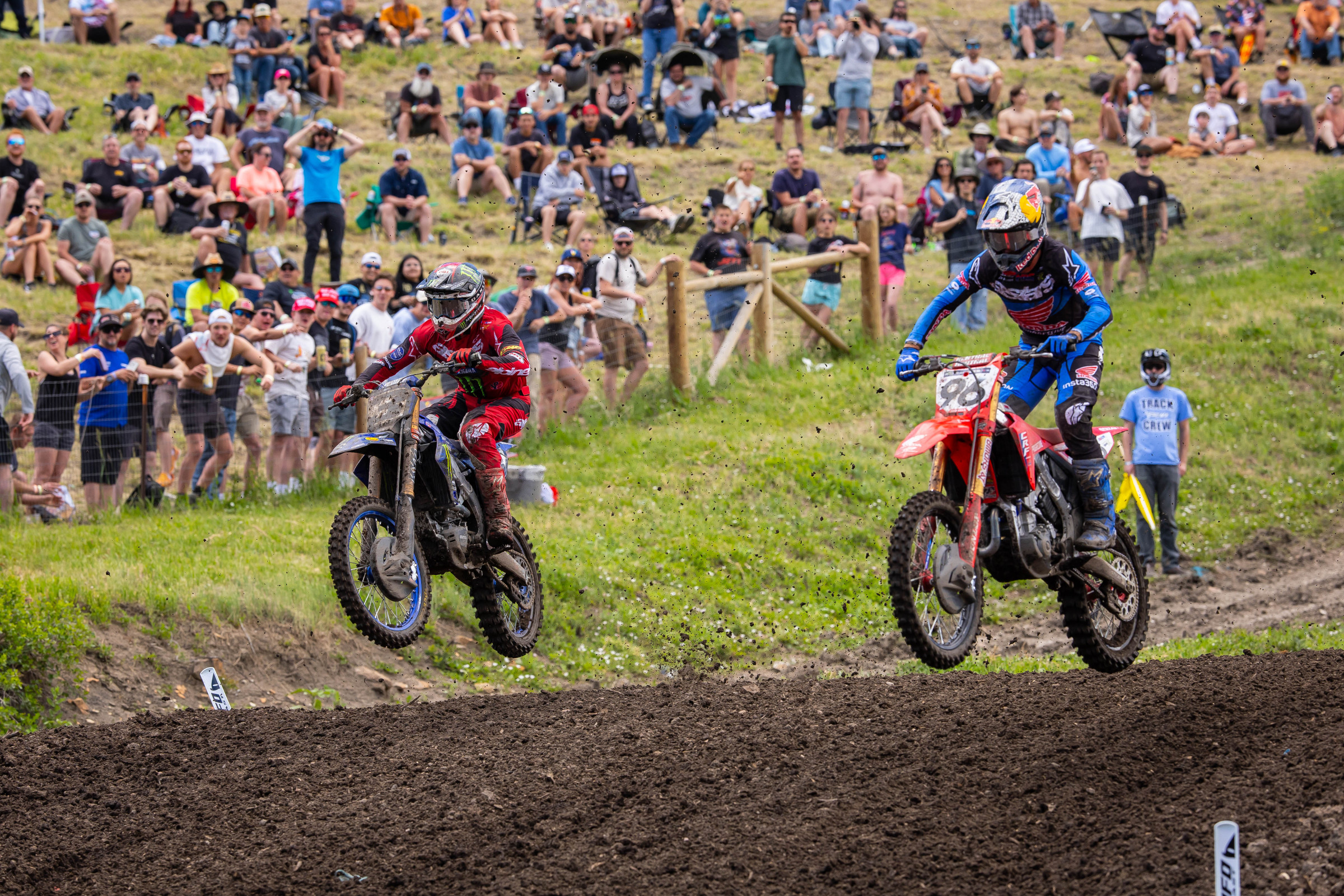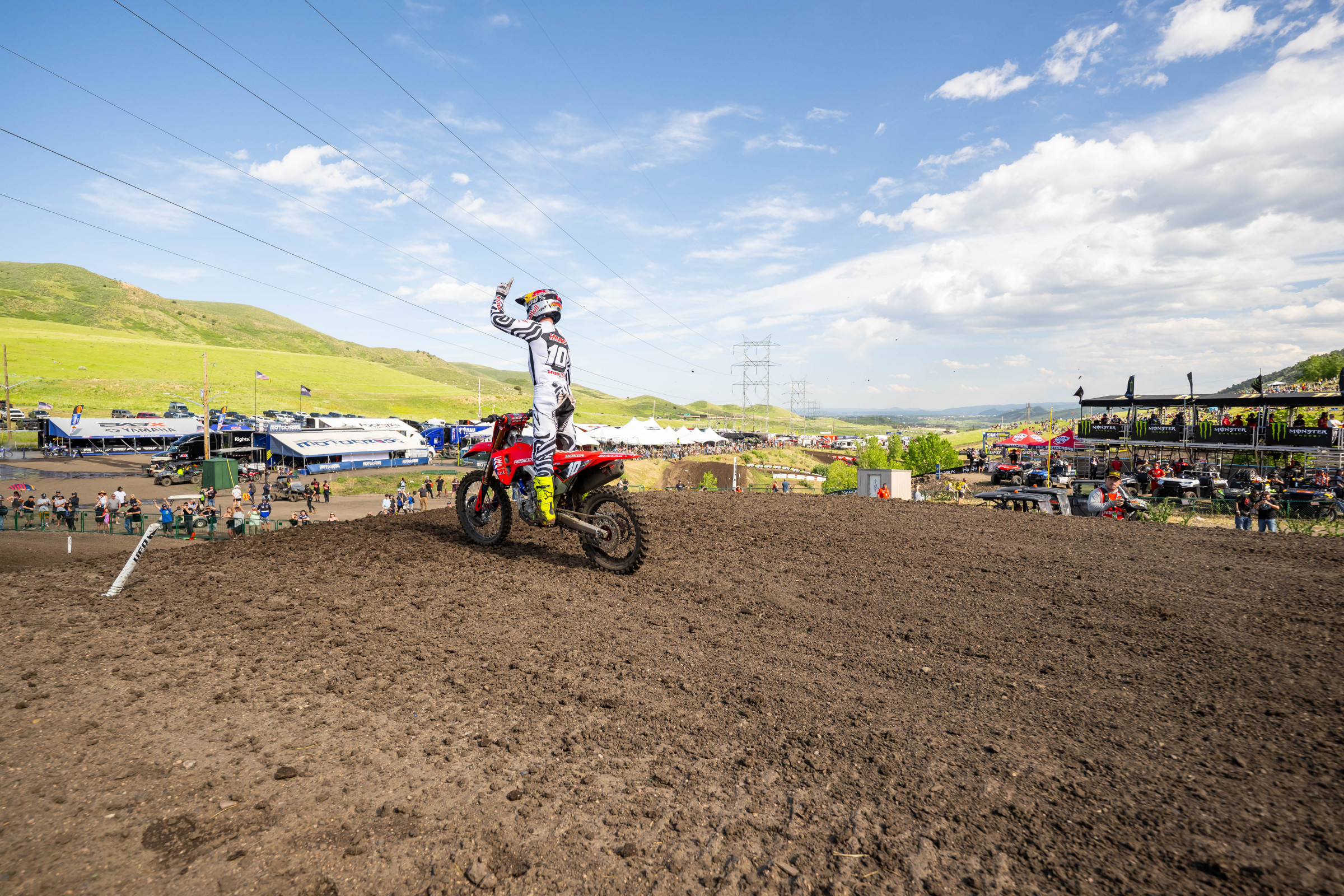The third round of the 2025 AMA Pro Motocross Championship went down over the weekend at the Toyota Thunder Valley National, and boy did things get sporty! Chance Hymas ended Haiden Deegan’s winning streak, Jett Lawrence dealt with some serious pressure from Aaron Plessinger, and Eli Tomac was back on the box. Afterward we had plenty of questions, which we chambered in an email and fired off to former pro and NBC’s on-track analyst, Jason Thomas.
The mile-high elevation of Thunder Valley is something that’s been talked about plenty already. But when you take into consideration the energy-zapping heat the racers were dealing with last week at Hangtown, are the challenges of performing at elevation compounded?
Yes, it’s more difficult. I noticed it several times running around the venue trying to get into position for our broadcast. I would stop and be chasing oxygen much more than I would normally be. Thankfully the temperatures were very cooperative on Saturday so that element was taken out of the equation. Hangtown was a brutal test of heat management where Thunder Valley was much harder on cardiovascular demand.
It rained all week leading up to the national. How much different of a track was it, and how did riders have to approach it differently?
The rain changed the track quite a bit. Dirt is brought in to soften things and add depth, that’s a normal aspect. The rain was able to work into that dirt over the course of the week. That moisture ran all the way through it versus being just on the top layer had rains come only on Friday. As I watched the track workers turn the dirt over throughout the day, it was just as wet underneath as the top layer. Turning that top layer under would typically expose drier layers below but not in this case. This dynamic kept the track soft and rutty all afternoon. Even at 5:00 p.m. the track was barely showing the effects of the sun and constant turnover. We don’t see this setup very often.
Sticking with that same vein, how much different was the track for the second motos?
It was a little better but only in the sections they reworked. It was a constant process of heavy equipment bringing the conditions back to prime and then a steady worsening throughout the moto. The sections that didn’t see much repair were very difficult by the end of the day. The section where Tomac passed Justin Cooper was a great example of this. It looked like Endurocross at times there.
The start at Thunder Valley is tricky. It’s uphill, it funnels into a right hander, bikes are already down on power due to elevation, and this year the soil was much different. On top of that, teams come up with different mapping to try to compensate for the difference. What’s it like mentally having to adjust to all of these variables?
For the riders, it just feels like the bikes are slower. Intensity has to go up a bit because you can’t rely on power to bail you out of sloppy technique. Jumps are more difficult to make (you could often see riders stretching to make big jumps) and that takes a little adjustment with timing. I always tried to remind myself to leave the power on longer than I felt appropriate entering corners, too. With soft dirt and less power, the braking point needs to move closer to the corner. The dirt will help slow you down and you’re simply traveling at a slower speed so even if you hold it on a little longer, you'll still end up entering the corner at the optimum speed. That all means you need to push harder and longer than your instinct would tell you to. Overcoming muscle memory is difficult and has to be constantly and actively on your mind.
We saw multiple bikes develop problems, including Haiden Deegan’s in the first 250 moto. Was there something about Thunder Valley that was hard on the machines, or was it just one of those weekends?
Two things there. First, many teams push the settings to the limit to offset the elevation. That ups the risk ratio and they simply have less endurance testing when on the most aggressive settings. Most teams won’t put their motorcycles into dangerous territory but we did see multiple riders have issues so it’s hard to not draw a direct correlation there.
Second, when you add in a high-revving rider like Deegan, all of that gets ratcheted up even more. RPM creates heat and heat destroys engine tolerances. When those tolerances are breached, things start getting wonky.
How one-lined was this track? Passing opportunities looked like they were few and far between, especially for Eli Tomac when he was trying to get around Hunter Lawrence in the first 450 moto.
It wasn’t that it was so one-lined, as there were ruts going everywhere. The trouble was that many of the corners funneled back to the inside as the best line. So to pass you either had to blitz past on a straightaway and get to that inside before they did or absolutely blitz around an outside line. I believe that the biggest key here was the element of surprise. If you were able to find a better line and strike on the first attempt, it was usually successful. That's what Plessinger did with Jett in moto one. If you used your best material and the lead rider was able to fend you off and learn from it, they would protect it the next laps and life got much harder.
On that same subject, Tomac got by Hunter Lawrence seemingly much easier in the second moto. What was the difference?
I think that the track was much more difficult in the second moto and that leads to bigger gaps between the riders. When the track has been worked over like it was in the first moto, Hunter would know to protect in the most difficult sections and then he could match pace in the fresh areas. The second moto conditions were much more challenging and offered more opportunity for mistakes and capitalizing upon them.
Did you think Aaron Plessinger was going to check out for the win in the first moto when he got by Jett Lawrence?
I did not. AP was ripping but I could see where he was making up time and it was in very specific areas where Jett’s lines were suboptimal. I believed that if Jett could pick up on those quickly, he could get back on AP’s rear wheel. I wasn’t sure how it would end but I didn’t think Jett would remain oblivious and watch AP ride off into the sunset, either. Jett’s personality is very jovial but he’s a quick learner and his race mind is one of the best I’ve ever seen.
What a rebound from Chance Hymas! One week after not even being able to compete in the second moto due to the lingering effects of food poisoning, he came back and went 1-1 at Thunder Valley. Did you expect him to be this good so soon after Hangtown?
I did not. He’s great at this track. We already knew that. But to qualify fastest and holeshot both motos, then go on to win uncontested? That’s a whole different level. Now, the question changes to if that is a one-off at Thunder Valley or if he can keep it up. He’s shown great speed at High Point so it wouldn’t surprise me to see him running around up front again this Saturday. The only real caveat to this whole dynamic is that he’s still 49 points down in a championship his heart is set on.
What do you make of Deegan’s day? He wasn’t able to run down Hymas in either moto, he seemed like he throttled it back a notch or two in the attitude department, and in his postrace interview his voice sounded different, not unlike at Hangtown.
I actually appreciated his demeanor after the race. He was respectful and owned it. He’s still himself but I am always curious to see how he will handle a setback. He takes a lot of heat for being brash and maybe rightfully so. But, when he’s subdued and respectful of someone else’s success, that should also be mentioned.
How frustrating is it for a guy like Levi Kitchen, who won races last year, to be getting beat by almost a minute?
Well, the starts are the issue here. His pace was not indicative of being beaten by a minute. Would he have beaten the top two? Maybe not but that’s not the point. His riding was very good but he can’t start 20th and expect to race with Deegs. Podiums matter, though, and he overcame a lot of traffic to get there.











